All>
|
Reference Books> All> | Sign in |
|

|
30 Days to the Co-taught Classroom (RB2852) Description: In 30 Days to the Co-Taught Classroom, authors Paula Kluth and Julie Causton will teach you all you need to know about collaboration in 30 days. In just 30 days, they will introduce you to the information, competencies and habits you will need to become a great co-teaching partner. The authors will help you get to know your co-teacher, understand each of your roles, improve your planning and co-planning skills, expand the structures you use to teach and support students and even celebrate your accomplishments. |
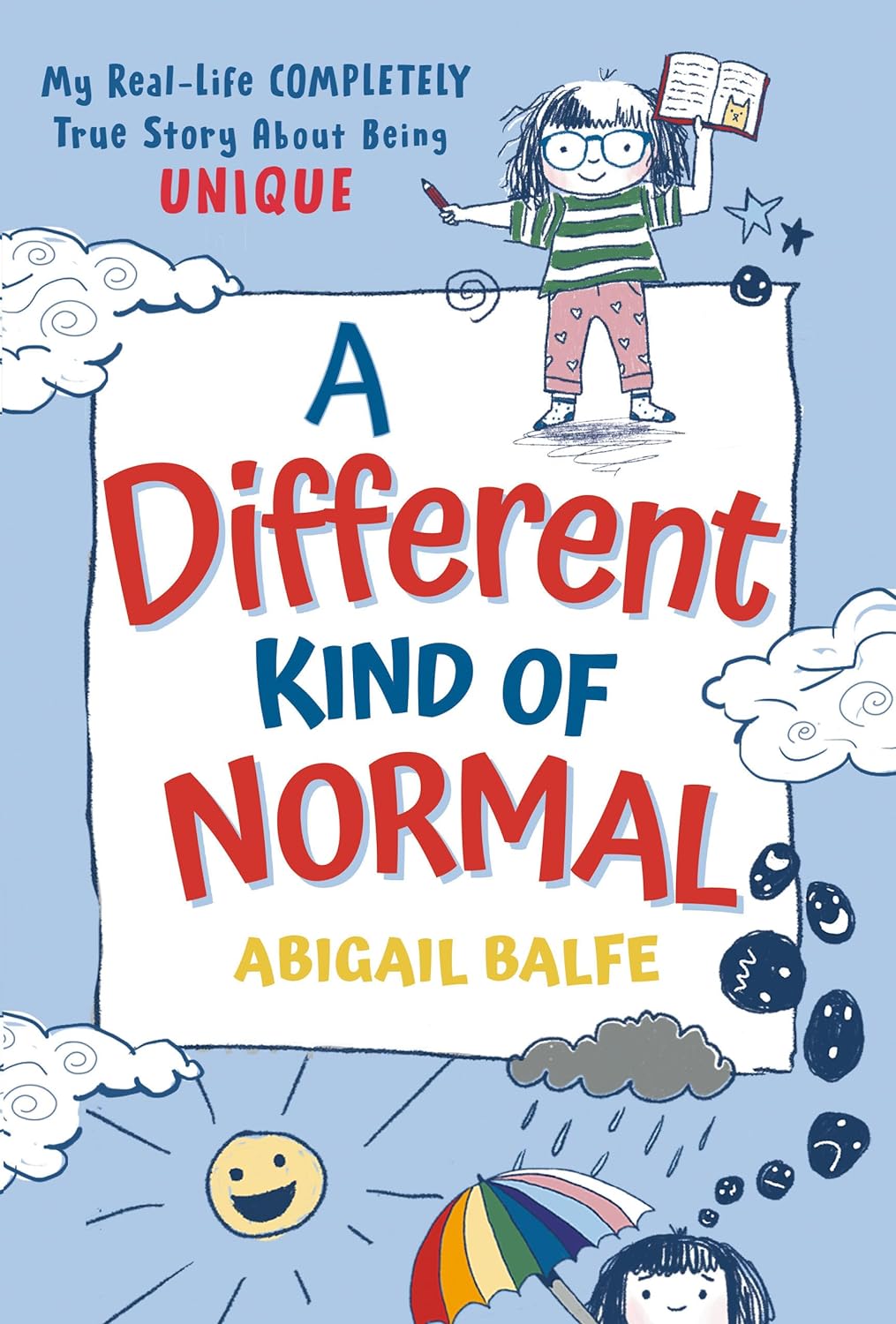
|
A Different Kind of Normal (RB3124) Description: By: Abigail Balfe In this joyfully illustrated memoir, Abigail Balfe recounts her journey growing up autistic and the challenges of navigating the “normal” world around her. This is a perfect book for both neurodivergent and neurotypical kids to learn more about neurodiversity. When Abigail was growing up, she was missing Very Important Information about herself. The information? That Abigail is autistic! In fact, Abigail didn’t know she was autistic until she was (kind of) an adult. This is Abigail’s story about what it was like growing up autistic in a confusing “normal” world. With entertaining anecdotes and funny accompanying illustrations, Abigail details her experiences and explains some Very Crucial Information about autism. And about neurodiversity too— a word that celebrates the importance of all brain types! Essential, funny, and completely unique, this book is for anyone who has ever felt different. |
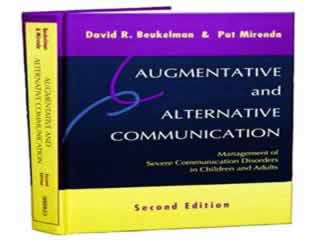
|
AAC Management of Severe Communication Disorders in Children & Adults (RB760) Description: Augmentative and Alternative Communication Management of Severe Communication Disorders in Children and Adults, Second Edition by David R. Buekelman, Ph.D., & Pat Mirenda, Ph. D. ©1998 Updates to include the latest theory, research, and technology in augmentative and alternative communication (AAC), this popular text now offers you more practical ideas for improving service delivery. With special attention to rehabilitation centers and school settings, the authors help you focus more than ever on individuals and their messages. You will discover new and improved assessment and intervention techniques for helping children and adults with severe communication disorders. Best of all, you will find complete coverage of a full range of congenital or acquired communication disorders, including those associated with cerebral palsy, autism, aphasia, and brain injury. |
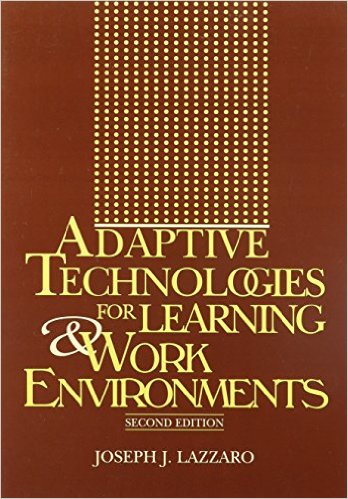
|
Adaptive Technologies for Learning and Working Env (RB2339) Description: This book spotlights technologies that are available to you at this time. It breaks down the latest products and systems for making technology accessible to all. |
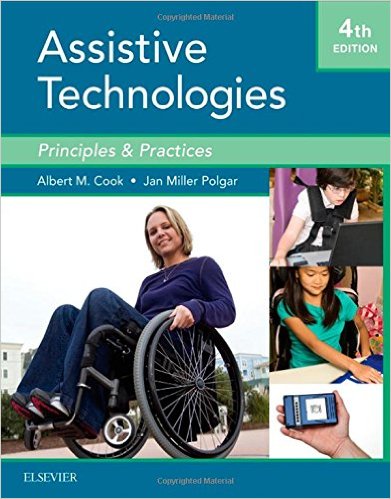
|
Assistive Technologies Principles and Practice (RB2168) Description: Strengthen your decision-making skills and help improve the quality of life for people with disabilities with a confident, practical understanding of assistive technology. This trusted resource also examines the relationship between the human user and the assisted activity within practical contexts to help you better apply the concepts you've learned to real-world practice and assist your clients more effectively. Also includes a CD that has video clips of assessment and device use that help you visualize key procedures and reinforce your clinical application skills. |
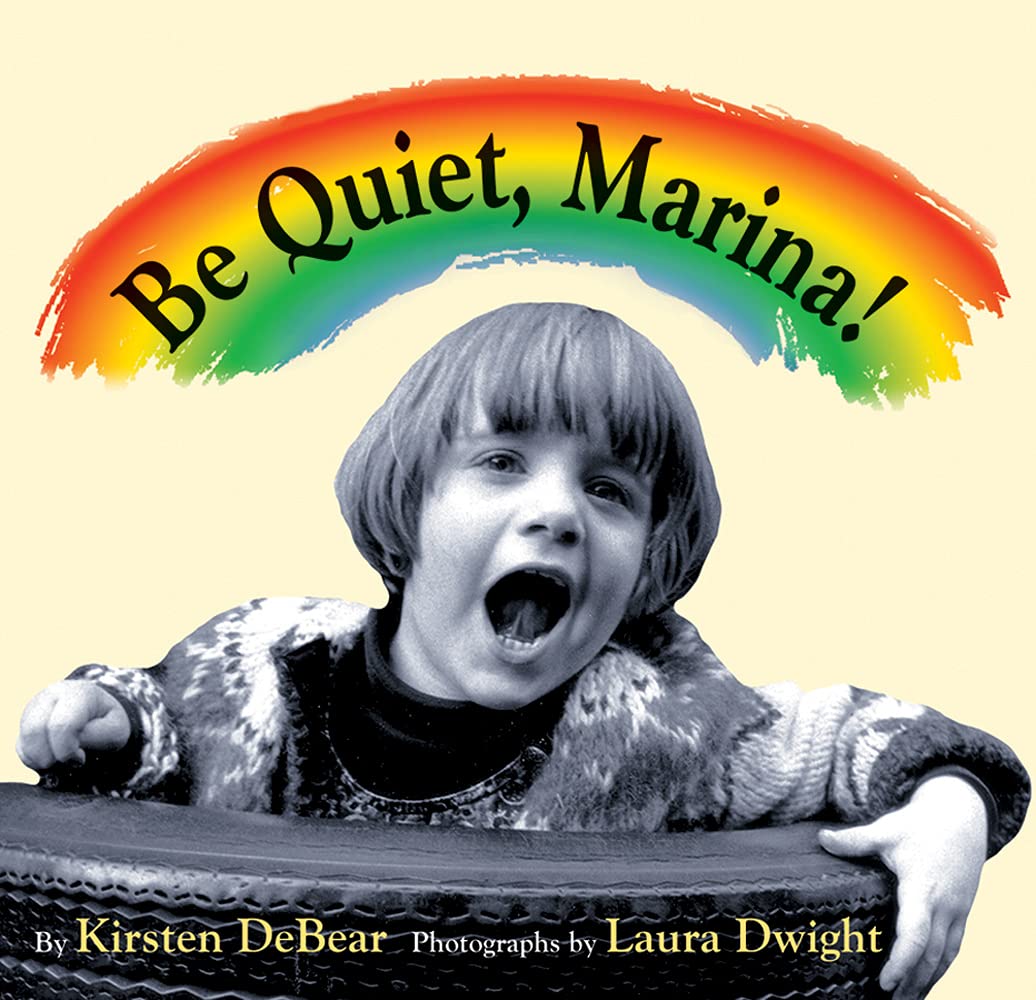
|
Be Quiet, Marina (RB3108) Description: Author: Kirsten Debear, Photographs: Laura Dwight Marina and Moira like playing together, but Marina is noisy and Moira likes quiet. How two preschoolers, one with Cerebral Palsy and one with Down syndrome, become best friends is beautifully told in words and photographs. |

|
Coaching for Equity (RB2850) Description: Coaching for Equity offers extensive strategies for talking about race, power, and systems of oppression, strategies which lead to changes in a teacher's practice. This book is for teachers, leaders, and coaches who accept responsibility for interrupting inequities in schools and who want to build the knowledge and skills to coach for equity. |
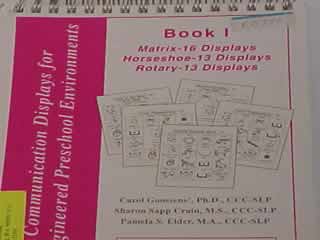
|
Communication Displays for Engineered Preschool Environments Book I (RB340) Description: Communication Displays for Engineered Preschool Environments Book I by Carol Goossens, Sharon Sapp Crain, and Pamela S. Elder. ©1994 This book features communication displays designed for the preschool and/or early school age environment. Book I contains 123 displays with 16 symbols each, and 114 horseshoe eye-point displays with 13 symbols each. The displays may be used on either electronic or non-electronic communication aids. They match the symbol size and layout pattern required for many commercially made devices. In addition to each overlay, a sample conversation script and a list of correlating toys and materials is provided. |
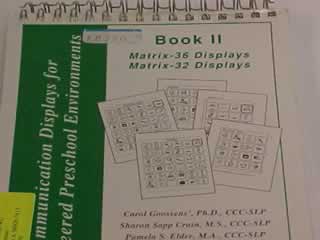
|
Communication Displays for Engineered Preschool Environments Book II (RB350) Description: Communication Displays for Engineered Preschool Environments Book II by Carol Goossens, Sharon Sapp Crain, and Pamela S. Elder, Augmentative Communication Specialists. �1994 This book features communication displays designed for the preschool and/or early school age environment. Book II contains 80 displays with 32 symbols each, and 79 displays with 36 symbols each. The displays may be used on either electronic or non-electronic communication aids. They match the symbol size and layout pattern required for many commercially made devices. In addition to each overlay, a sample conversation script and a list of correlating toys and materials is provided. |
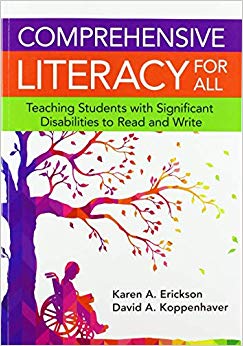
|
Comprehensive Literacy for All: Teaching Students (RB2624A) Description: Literacy improves lives--and with the right instruction and supports, all students can learn to read and write.That's the core belief behind this teacher-friendly handbook, your practical guide to providing comprehensive, high-quality literacy instruction to students with significant disabilities. Drawing on decades of classroom experience, the authors present their own innovative model for teaching students with a wide range of significant disabilities to read and write print in grades preK-12 and beyond. Foundational teaching principles blend with concrete strategies, step-by-step guidance, and specific activities, making this book a complete blueprint for helping students acquire critical literacy skills they'll use inside and outside the classroom. An essential resource for educators, speech-language pathologist, and parents--and an ideal text for courses that cover literacy and significant disabilities--this book will help you ensure that all students have the reading and writing skills they need to unlock new opportunities and reach their potential. READERS WILL: Discover 10 success factors for helping students with significant disabilities become literate Teach emergent readers and writers skillfully, with evidence-based strategies for shared and independent reading, early writing instruction, and alphabetic and phonological awareness Help students acquire conventional literacy skills, with adaptable strategies for teaching reading comprehension, vocabulary, writing, decoding, and spelling Organize and deliver comprehensive literacy instruction in a variety of settings, both inside and outside of school Use assistive technology effectively to support reading, writing, and communication Engage and motivate students and make literacy instruction meaningful to their everyday lives PRACTICAL MATERIALS: Sample teaching scenarios and dialogues, how-to strategies, and downloadable resources, including sample lessons, a quick-guide to key literacy terms, lesson sequences, and flowcharts to guide instruction. |

|
Control Alt Achieve (RB2854) Description: With Control Alt Achieve, author Eric Curts offers you the keys to revolutionizing classroom learning with the Google tools you already use. Dazzle your students by transforming Google Docs into blackout poetry, fire up creative possibilities by using Google Slides for comic strips, and make math more accessible—and fun—by turning to Google Drawings as an unlikely ally. |

|
Designer and Deliver (RB3090) Description: Universal Design for Learning (UDL) is the best way to teach all students effectively and break down barriers to learning—but how can busy teachers get started with UDL right now? Find the answers in the second edition of this bestselling, teacher-trusted primer, created by internationally recognized UDL expert Loui Lord Nelson. Thoroughly updated to reflect new research and developments in the field of UDL, this book gives K–12 teachers a reader-friendly UDL introduction and a practical framework for implementation, with guidelines and checkpoints for designing effective, barrier-free lesson plans and learning environments. You’ll learn how to use the three core principles of UDL—Engagement, Representation, and Action & Expression—to present information in multiple ways and ensure access for all learners. Throughout the book, detailed examples, stories, illustrations, teacher reflections, and activities reinforce UDL principles and help you put them into practice in both virtual and in-person settings. Written in first person, like a face-to-face talk with a passionate educator, this research-based book will guide you in designing equitable, inclusive, and culturally responsive learning environments that meet the needs of diverse learners. An essential UDL introduction for both preservice and inservice educators! |
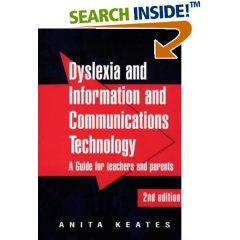
|
Dyslexia and Information and Communications Tech (RB1629) Description: Effective use of Infomation and Communications Technology (computers/software) �2002 Can enhance many dyslexic pupils' access to the curriculum, but it has to be used appropriately. This book will be useful to all teachers, teaching assistants and parents who are searching for practical advice on how to help students with dyslexia. This book offers strategies and suggestions that are based on the author's extensive classroom experience. It will guide the user through the maze of hardware and software currently available, identifying those most suitable for different Key Stages and curriculum subjects as well as providing ICT solutions to the problems of assessing and screening for dyslexia. |
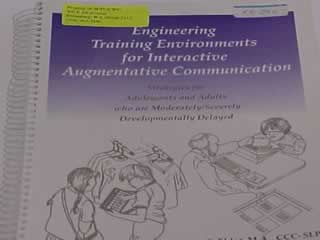
|
Engineering Training Environments for Interactive Augmentative Communication (RB380) Description: Engineering Training Environments for Interactive Augmentative Communication by Pamela S. Elder, M.A., CCC-SLP, and Carol Goossensi, Ph. D., CCC-SLP. �1981-1992 This resource book gives specific guidelines for implementing augmentative communication training with adolescents and adults who are moderately/severely developmentally delayed. It is geared for adolescents in public schools or adults in postschool training environments. A systematic approach to the integration of augmentative communication in domestic living, vocational training, leisure/recreational, and community-living activities is given. |
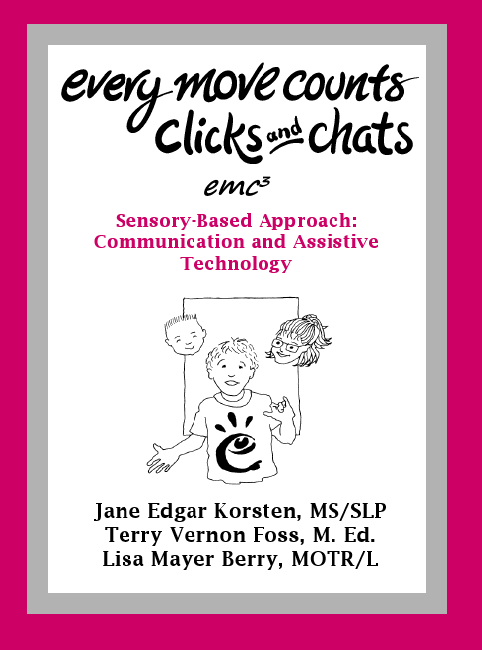
|
Every move counts clicks and chats (RB2376) Description: A sensory based approach to communication and assistive technology for individuals with significant sensory motor differences, developmental differences and autism. |

|
Frida Kahlo (Volume 2) (RB3109) Description: Author: Maria Isabel Sanchez Vegara, Photographs: Gee Fan Eng When Frida was a teenager, a terrible road accident changed her life forever. Unable to walk, she began painting from her bed. Her self-portraits, which show her pain and grief, but also her passion for life and instinct for survival, have made her one of the most famous artists of the twentieth century. This moving book features stylish and quirky illustrations and extra facts at the back, including a biographical timeline with historical photos and a detailed profile of the artist's life. Little People, BIG DREAMS is a best-selling biography series for kids that explores the lives of outstanding people, from designers and artists to scientists and activists. All of them achieved incredible things, yet each began life as a child with a dream. This empowering series of books offers inspiring messages to children of all ages, in a range of formats. The board books are told in simple sentences, perfect for reading aloud to babies and toddlers. The hardcover and paperback versions present expanded stories for beginning readers. With rewritten text for older children, the treasuries each bring together a multitude of dreamers in a single volume. You can also collect a selection of the books by theme in boxed gift sets. Activity books and a journal provide even more ways to make the lives of these role models accessible to children. |
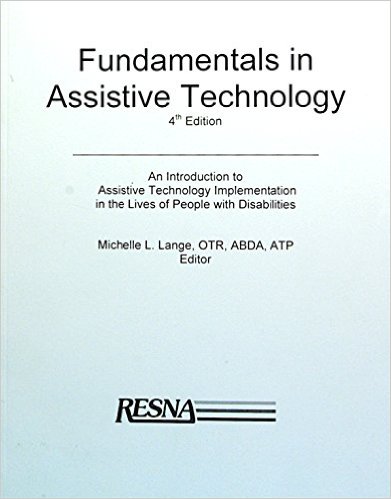
|
Fundamentals in Assistive Technology (RB2169) Description: This book by Michelle L. Lange is helpful to special educators trying to learn more about assistive technology. Published by Resna |

|
Hello Goodbye Dog (RB3110) Description: Author: Maria Gianferrari, Illustrator: Patrice Barton For Zara's dog, Moose, nothing is more important than being with her favorite girl. So when Zara has to go to school, WHOOSH, Moose escapes and rushes to her side. Hello, Moose! Unfortunately, dogs aren't allowed at school and Moose has to go back home. Goodbye, Moose. But Moose can't be held back for long. Through a series of escalating escapes, this loyal dog always finds her way back to Zara, and with a little bit of training and one great idea, the two friends find a way to be together all day long. |
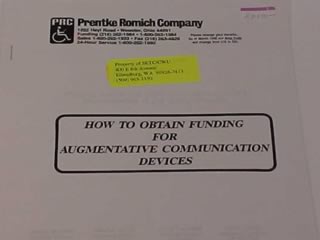
|
How to Obtain Funding for Augmentative Communication Devices (RB510) Description: How to Obtain Funding for Augmentative Communication Devices by Prentke Romich Co. revised 1989 A book on how the obtain funding for augmentative communication devices. |

|
I See You in There (RB2868) Description: This book is a collection of personal stories of people I have come in contact with over my life but mostly over the last 23 years of my career as a Speech-Language Pathologist who specializes in augmentative and alternative communication (AAC). For those that don’t know that vocabulary, I usually explain my job by saying “think Stephen Hawking.” He is the most famous person I can think of that used AAC to communicate, and he is also the best example of a person who is highly intelligent but struggles to communicate verbally. He is a hero because he very publicly debunked that verbal ability and intelligence must go together. My road to this career was anything but straight. I had the honor of attending the University of Washington for my Bachelor of Science degree in speech and language. I then attended Western Washington University and received a Masters of Arts in Speech-Language Pathology. Right from the start, I realized that even those in my field struggled to define what it is we “do.” Are we scientists or artists? The field of speech and language cannot agree as to whether or not the degree is an Art or a Science. Whole colleges have decided it’s an art. Other colleges feel strongly that it is a science. Some that are more drawn to the educational and pediatric population, often consider it a Masters of Art. Those on the more medical side of things, and possibly more focused on adults, have often labeled this a Masters of Science. What is communication? Is it a science? Is it art? What is the facilitation of communication… The role of the actual therapist? Is that a science? Is that an art? It is data-driven for sure. Anything researched has to be science, right? For sure those that are not functionally verbal have significant medical diagnoses to explain this phenomenon. Traumatic brain injury, cerebral palsy, autism, syndromes, and genetic anomalies, and advances in medical technology that has helped us preserve life in the face of prematurity, all contribute to the cause of speech and language impairments. All of this is science. Certainly, the physiological and neurological components of speech production are scientific. But what is language? There are nouns and verbs and frequencies of those words. Parts of speech, verb conjugation, and sentence structure that follows rules within that language and dialect. There are phonemes and all different kinds of sounds in all different kinds of languages that can be thrown into a chart for analysis. Is that science too? But the purpose of communication is human connection. Connecting with other humans is so individual it cannot be anything but art. Actually, in so many things within our lives, we struggle between the balance of science and art. Think about weight loss. There’s an absolute science about calorie intake, calorie-burning, protein versus carbohydrates, even science that disproves the other pieces of science. But your weight, your eating habits, your preferences, your food preparation, or your social experiences around food, is all of that, not just human expression and therefore an art? |

|
Inclusion in Action (RB2923) Description: How can K–12 educators break down the barriers to full inclusion and teach all learners effectively? Curriculum modifications are the key—and Nicole Eredics is the expert! A seasoned educator and creator of popular blog The Inclusive Class, Eredics introduces you to the what and how of inclusion in this motivating, reader-friendly guidebook. You'll start with a big-picture guide to creating an inclusive culture in your classroom and school, with invaluable guidance on key topics like team collaboration, universal design for learning, co-teaching, social-emotional supports, and accommodations. Then you'll get 40 specific, teacher-tested strategies to modify your curriculum for students who work below grade level. Ready to use in your classroom right away, each strategy comes with student goals, simple step-by-step directions and implementation tips, suggested interventions and extensions, and samples of authentic student work that illustrate the strategy in action. Equally useful as a beginner's guide to inclusion and a goldmine of practical ideas for experienced teachers, this must-have book will help make your curriculum “possible and achievable” for every learner, with and without disabilities. PRACTICAL MATERIALS: More than a dozen reproducible forms for use with specific modifications; lists of helpful inclusion-themed websites, blogs, books, and videos. 40 modifications that help students: Learn new vocabulary words Understand story structure Sequence materials, concepts, and numbers Develop recall ability Demonstrate relationships among ideas Organize information Make a representation of a concept Identify similarities and differences Make decisions based on evidence Learn to recognize and correct errors and more! |

|
Inclusive Learning 365 (RB3095) Description: Designed to be read one day – and page – at a time, this book from four inclusive learning experts offers 365 strategies for implementing technology to design inclusive experiences. Educators across the world are working to design individualized instruction that empowers every student to become experts at learning. Technology and instructional interventions designed to support students with disabilities often eventually become mainstream and used by the masses. These practices provide a pathway for designing inclusive, equitable and accessible educational experiences that meet the needs of every individual learner. This engaging book includes daily strategies accompanied by examples of tools that can be implemented immediately to design meaningful instruction. Topics covered include role-playing games for social-emotional learning, building literacy through captioned video, coding to teach early literacy, text-to-speech for math and reading, and much more! Each daily strategy includes: Explanation of how to use the strategy to design inclusive educational experiences. Examples of tools that can be used to implement the strategy. Alternative ways to use the strategy to extend student learning. Images illustrating the strategy or tool. Identification of relevant ISTE Standards for Educators and ISTE Standards for Students. Related resources. The heart of the book is the shift in mindset that occurs by exploring a different practical, inclusive strategy each day and infusing these strategies into everyday practice. Audience: K-12 educators, special educators, administrators |
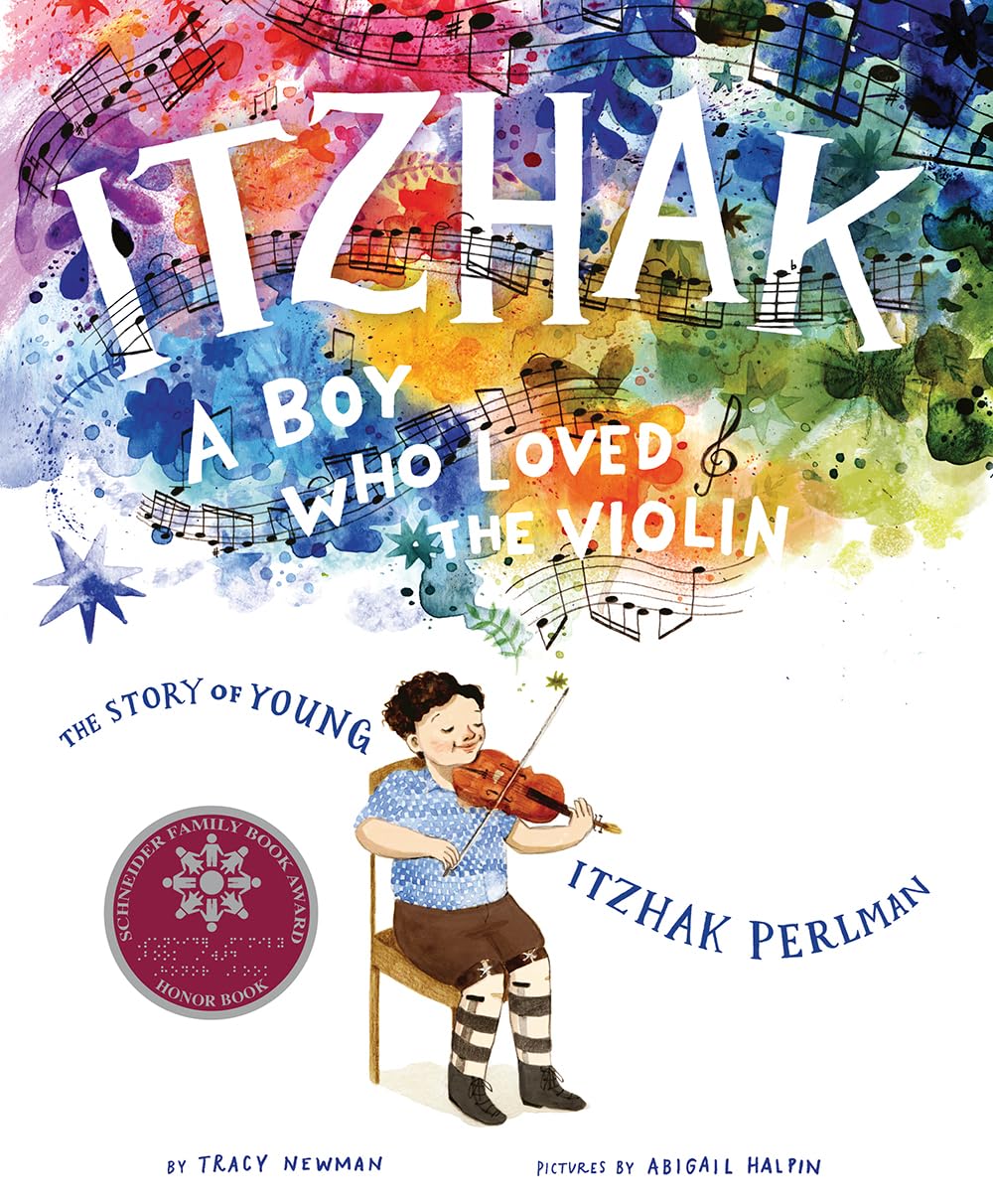
|
Itzhak: A Boy Who Loved the Violin (RB3136) Description: Author: Tracy Newman, Illustrator: Abigail Halpin Before becoming one of the greatest violinists of all time, Itzhak Perlman was simply a boy who loved music. Raised by a poor immigrant family in a tiny Tel Aviv apartment, baby Itzhak was transformed by the sounds from his family’s kitchen radio—graceful classical symphonies, lively klezmer tunes, and soulful cantorial chants. The rich melodies and vibrant rhythms spoke to him like magic, filling his mind with vivid rainbows of color. After begging his parents for an instrument, Itzhak threw his heart and soul into playing the violin. Despite enormous obstacles—including a near-fatal bout of polio that left him disabled for life—Itzhak persevered, honing his extraordinary gift. When he performed on the Ed Sullivan Show at only 13, audiences around the world were mesmerized by the warmth, joy, and passion in every note. Gorgeously illustrated with extensive back matter, Itzhak: A Boy Who Loved the Violin recounts Itzhak’s childhood journey—from a boy with a dream to an internationally acclaimed violin virtuoso. |

|
Leading the Way to Excellence in AT Services (RB2883) Description: Leading the Way to Excellence in AT Services is designed to help administrators identify critical issues and specific actions that will influence the provision of excellent assistive technology (AT) devices and services. AT experts Gayl Bowser and Penny R. Reed examine four aspects of school administration—leadership, program management, supervision, and advocacy and program improvement—and their relationship to AT. The result is an authoritative and useful guide that explains the legal, ethical, and practical reasons for providing high-quality AT to every student who needs it. In this highly practical book, readers learn to: identify ways to support educational programs that encourage and sustain students’ and educators’ use of AT; create and share a vision of their agency’s approach to providing AT devices and services; manage material resources, allocation of personnel, time, and physical resources in a way that helps to provide an efficient, ethical, and cost-effective AT system; support educators in learning and applying pedagogical strategies for integrating the use of AT into the educational programs of students with disabilities; and regularly assess AT services and identify strategies to improve the current model. The authors showcase a number of resources, self-assessment tools, and specific strategies to help administrators and schools deliver assistive technology services that are academically effective and also cost effective. |

|
Make Stuff and Love People (RB2855) Description: This book is about the joy of creating and making thousands of different assistive technology solutions to maximize independence at home, workplace, school, and communities for individuals who experience various limitations. |
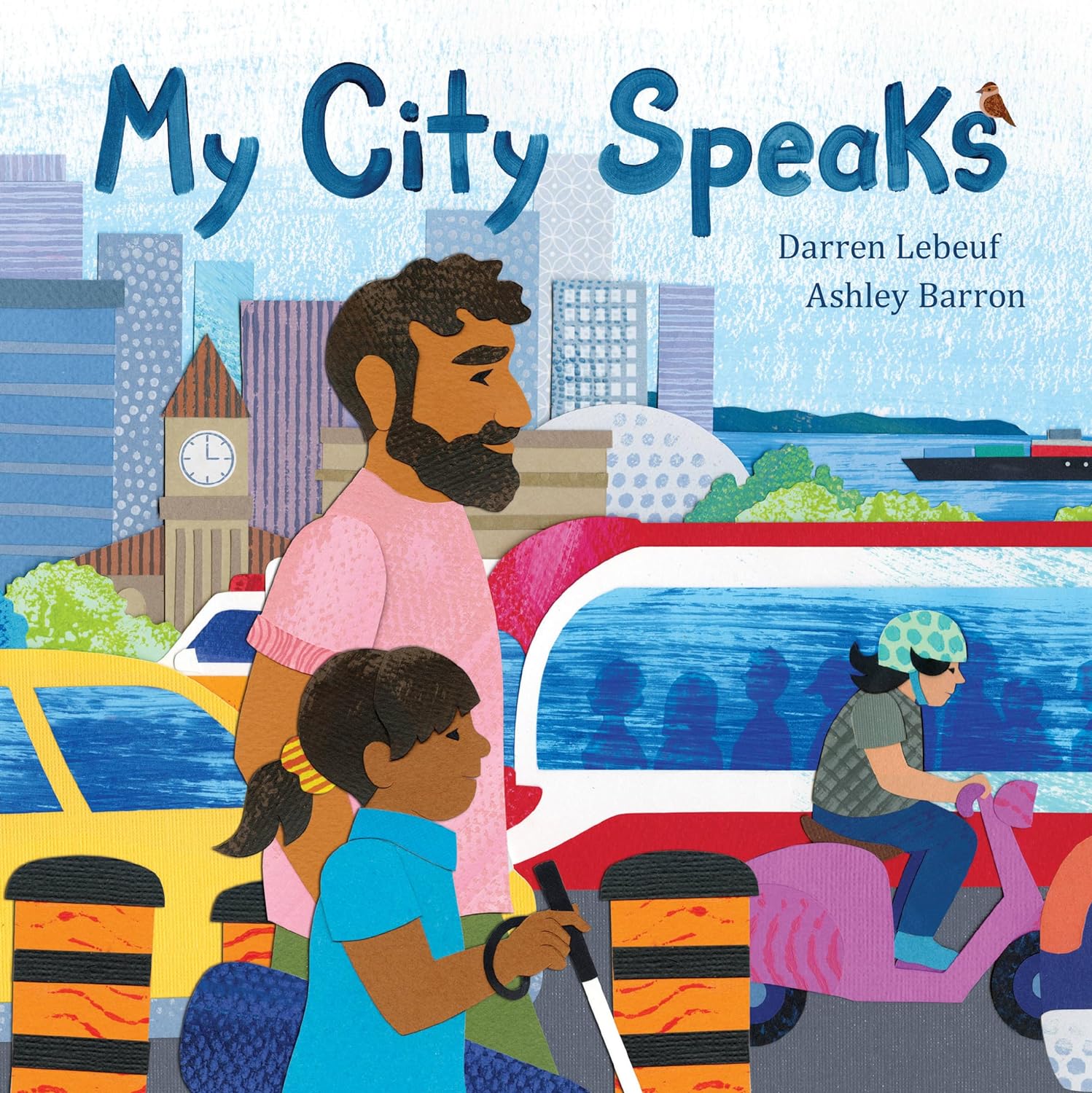
|
My City Speaks (RB3111) Description: Author: Darren Lebeuf , Illustrator: Ashley Barron A young girl, who is visually impaired, finds much to celebrate as she explores the city she loves. A young girl and her father spend a day in the city, her city, traveling to the places they go together: the playground, the community garden, the market, an outdoor concert. As they do, the girl describes what she senses in delightfully precise, poetic detail. Her city, she says, “rushes and stops, and waits and goes.” It “pitters and patters, and drips and drains.” It “echoes” and “trills,” and is both “smelly” and “sweet.” Her city also speaks, as it “dings and dongs, and rattles and roars.” And sometimes, maybe even some of the best times, it just listens. Darren Lebeuf uses his keen observational skills as an award-winning photographer to poetically capture sensory experiences in this charming ode to city life. The rhythmic, lyrical text makes for an appealing read-aloud. Ashley Barron’s vividly hued cut-paper collage illustrations add compelling visual interest to the text’s descriptions. Though the main character is visually impaired, she travels around the city and enthusiastically enjoys its many offerings, and actively contributes to the lyrical bustle of city life by putting on a violin performance in the park. The author’s use of limited but evocative language can help children develop an aesthetic awareness and can serve as a perfect jumping-off point for children to use their senses to specifically describe, and appreciate, their own surroundings. The story and illustrations were reviewed by a blind sensitivity reader. |
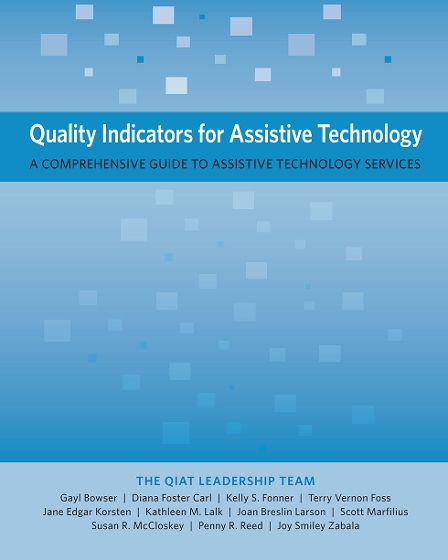
|
Quality Indicators for Assistive Technology (RB2336) Description: The QIAT Community is a nationwide grassroots group that includes hundreds of individuals who provide input into the ongoing process of identifying, disseminating, and implementing a set of widely-applicable Quality Indicators for Assistive Technology Services in school settings that can be used as a tool to support: school districts as they strive to develop and provide quality assistive technology services aligned to federal, state and local mandates assistive technology service providers as they evaluate and constantly improve their services consumers of assistive technology services as they seek adequate assistive technology services which meet their needs universities and professional developers as they conduct research and deliver programs that promote the development of the competencies needed to provide quality assistive technology services policy makers as they attempt to develop judicious and equitable policies related to assistive technology services. |
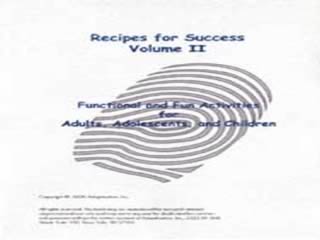
|
Recipes for Success Volume 2 (RB800) Description: Recipes for Success Volume 2. ©2001 Recipes for Success Volume 2 is Adaptivation's second resource guide filled with dozens of practical applications for assistive technology. As in Recipes for Success Volume 1, each recipe gives a detailed list of materials needed, step-by-step instructions, and numerous activity and equipment variations to help you adapt an activity to meet the needs of your client. Volume 2 is an insert that contains more recipes geared for adolescent and adult users daily activities and vocations. A great addition to our already popular Recipes for Success Volume 1. |

|
Speech Recognition Applications: Dragon (RB1684) Description: Speech recognition technology has made numerous advancements since the early 2000's and is being used by more and more individuals as a daily input device. Dragon NaturallySpeaking 11 is the leading speech recognition software and the Speaking Solutions instructional manuals provide a perfect training solution. This self-paced training manual provides easy to follow step-by-step directions and includes many screen shots, tips and hands-on exercises that will help you quickly increase your overall productivity. |

|
Teaching Effectively with Zoom (RB2849) Description: The book is based on the author’s experience teaching online, observations of several colleagues teaching online at Harvard University, research-based principles of effective teaching and learning, and, perhaps just as importantly, interviews with dozens of students who recently experienced online learning for the first time and also had to adapt to this way of learning in a hurry. |
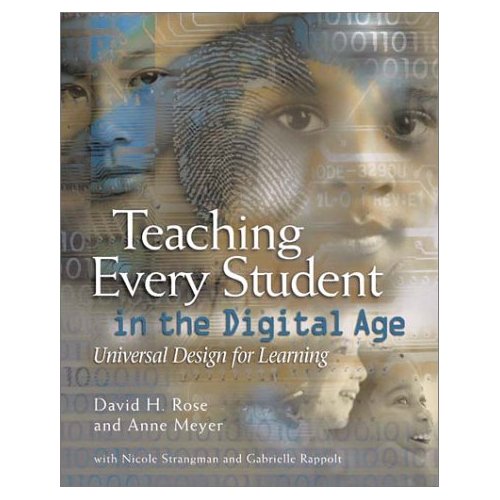
|
Teaching Every Student: UDL (RB1628) Description: Teaching Every Student in the Digital Age: Universal Design for Learning by David H. Rose and Anne Meyer �2002 A comprehensive presentation of the principles and applications of Univeral Design for Learning (UDL), a practical, research-based framework for responding to individual learning differences and a blueprint for redesign of education. |

|
The New Assistive Tech (RB2431) Description: School districts often struggle to develop consistent practices for meeting the assistive needs of special education students. This playful yet professional book will help public school educators select, acquire and implement technology to help all students, but especially those with special needs. The New Assistive Tech is a catalyst for breaking down walls between special education and general education, and will help all educators realize they have tech knowledge (and can build upon that knowledge) that can be used to support students with disabilities. This book: details how an educational team can request assistance to determine technology needs; explains how to conduct and document assessments to help an educational team make informed decisions about technology needs; describes a proactive approach to professional development for individuals and for those who train others on the use of technology; assists individuals or teams in creating an action plan for developing a culture of inclusion; and interweaves stories, songs and other exciting features to make learning fun! |

|
UDL and Blended Learning (RB2848) Description: As we face increasing uncertainty and frequent disruption to traditional ways of living and learning, UDL and Blended Learning offers bold, innovative, inclusive solutions for navigating a range of learning landscapes, from the home to the classroom and all points in between, no matter what obstacles may lie ahead. |

|
UDL Now! (RB2853) Description: Katie Novak provides practical insights and savvy strategies for helping all learners meet high standards using the principles of Universal Design for Learning (UDL). UDL is a framework for inclusive education that aims to lower barriers to learning and optimize each individual's opportunity to learn. Novak shows how to use the UDL Guidelines to plan lessons, choose materials, assess learning, and improve instructional practice. Novak discusses key concepts such as scaffolding, vocabulary-building, and using student feedback to inform instruction. She also provides tips on recruiting students as partners in the teaching process, engaging their interest in how they learn. |
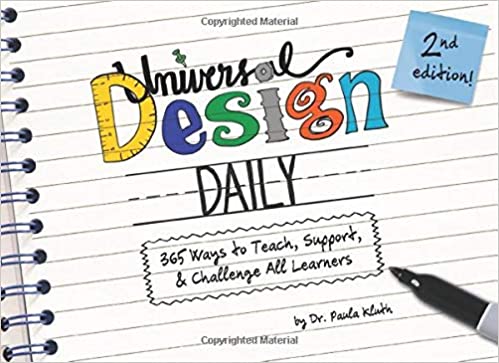
|
Universal Design Daily (RB2803) Description: This user-friendly guide was created to help educators learn more about universal design by exploring the practices associated with it. The book features dozens of ideas for providing multiple methods of engagement (e.g., creating personalized learning plans, using movement/brain breaks, engaging in community building), multiple methods of action and expression (e.g., providing assessment choices, encouraging doodling, introducing assistive technology), and multiple methods of representation (e.g., teaching with powerful visuals, introducing films and podcasts, creating costumes). Universal Design Daily also provides several suggestions to help teachers and teams “set up” for universally-designed curriculum, instruction, and learning environments. One section is dedicated to preparing students and learning spaces and one is focused on UDL-related professional development. This second edition differs from the first in that all of the teaching ideas are organized around CAST's (www.cast.org) Universal Design for Learning principles. There are ideas for every single guideline and checkpoint. This edition is also unique in that it includes new material including several suggestions for virtual classrooms and e-learning. This book is designed to support any educator who may not have the time to spend hours on the web, attend a series of workshops, or read a multi-chapter book cover-to-cover in order to plan effective and appropriately challenging lessons for the students in his or her diverse classroom. With 365 ideas to explore, you can focus on just one idea per day, flip through the pages at your own pace, or read the entire book in one sitting. You can use the book as a tool for weekly inspiration or you can keep it on your desktop as a lesson-planning reference tool. No matter how you read it or use it, Universal Design Daily is sure to provide you with important universal design know-how and a wide range of creative and inspiring ideas for your diverse K-12 school or classroom. |

|
Universal Design Daily (RB2803B) Description: This user-friendly guide was created to help educators learn more about universal design by exploring the practices associated with it. The book features dozens of ideas for providing multiple methods of engagement (e.g., creating personalized learning plans, using movement/brain breaks, engaging in community building), multiple methods of action and expression (e.g., providing assessment choices, encouraging doodling, introducing assistive technology), and multiple methods of representation (e.g., teaching with powerful visuals, introducing films and podcasts, creating costumes). Universal Design Daily also provides several suggestions to help teachers and teams “set up” for universally-designed curriculum, instruction, and learning environments. One section is dedicated to preparing students and learning spaces and one is focused on UDL-related professional development. This second edition differs from the first in that all of the teaching ideas are organized around CAST's (www.cast.org) Universal Design for Learning principles. There are ideas for every single guideline and checkpoint. This edition is also unique in that it includes new material including several suggestions for virtual classrooms and e-learning. This book is designed to support any educator who may not have the time to spend hours on the web, attend a series of workshops, or read a multi-chapter book cover-to-cover in order to plan effective and appropriately challenging lessons for the students in his or her diverse classroom. With 365 ideas to explore, you can focus on just one idea per day, flip through the pages at your own pace, or read the entire book in one sitting. You can use the book as a tool for weekly inspiration or you can keep it on your desktop as a lesson-planning reference tool. No matter how you read it or use it, Universal Design Daily is sure to provide you with important universal design know-how and a wide range of creative and inspiring ideas for your diverse K-12 school or classroom. |

|
Universal Design Daily (RB2803BB) Description: This user-friendly guide was created to help educators learn more about universal design by exploring the practices associated with it. The book features dozens of ideas for providing multiple methods of engagement (e.g., creating personalized learning plans, using movement/brain breaks, engaging in community building), multiple methods of action and expression (e.g., providing assessment choices, encouraging doodling, introducing assistive technology), and multiple methods of representation (e.g., teaching with powerful visuals, introducing films and podcasts, creating costumes). Universal Design Daily also provides several suggestions to help teachers and teams “set up” for universally-designed curriculum, instruction, and learning environments. One section is dedicated to preparing students and learning spaces and one is focused on UDL-related professional development. This second edition differs from the first in that all of the teaching ideas are organized around CAST's (www.cast.org) Universal Design for Learning principles. There are ideas for every single guideline and checkpoint. This edition is also unique in that it includes new material including several suggestions for virtual classrooms and e-learning. This book is designed to support any educator who may not have the time to spend hours on the web, attend a series of workshops, or read a multi-chapter book cover-to-cover in order to plan effective and appropriately challenging lessons for the students in his or her diverse classroom. With 365 ideas to explore, you can focus on just one idea per day, flip through the pages at your own pace, or read the entire book in one sitting. You can use the book as a tool for weekly inspiration or you can keep it on your desktop as a lesson-planning reference tool. No matter how you read it or use it, Universal Design Daily is sure to provide you with important universal design know-how and a wide range of creative and inspiring ideas for your diverse K-12 school or classroom. |